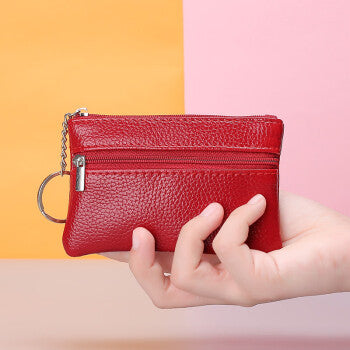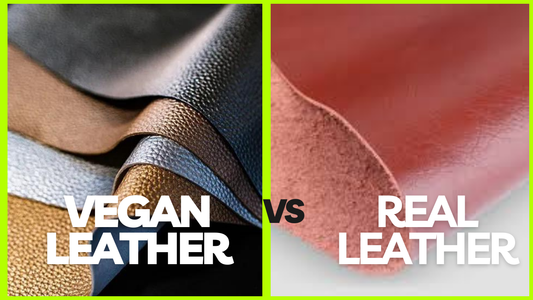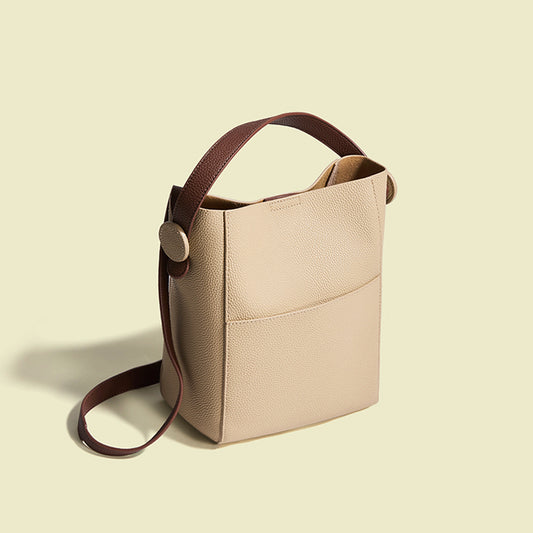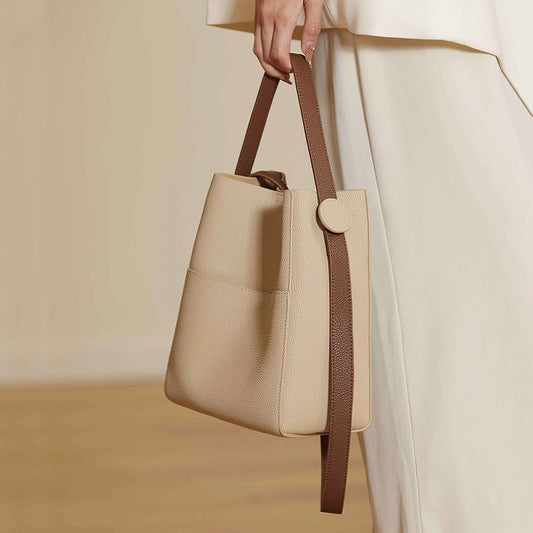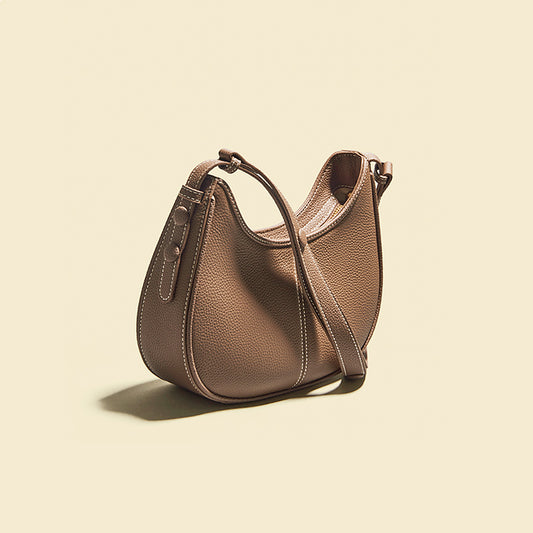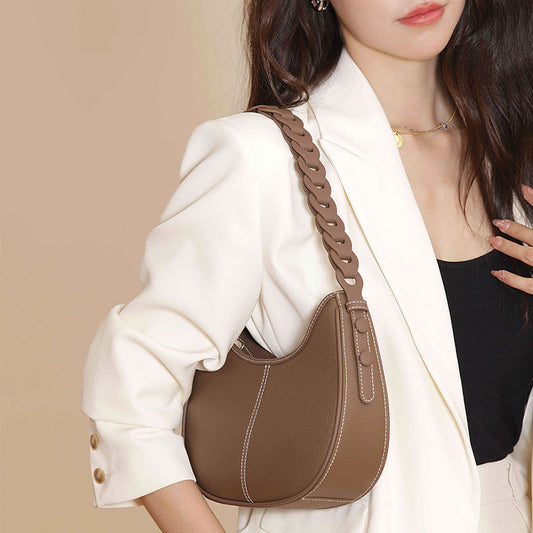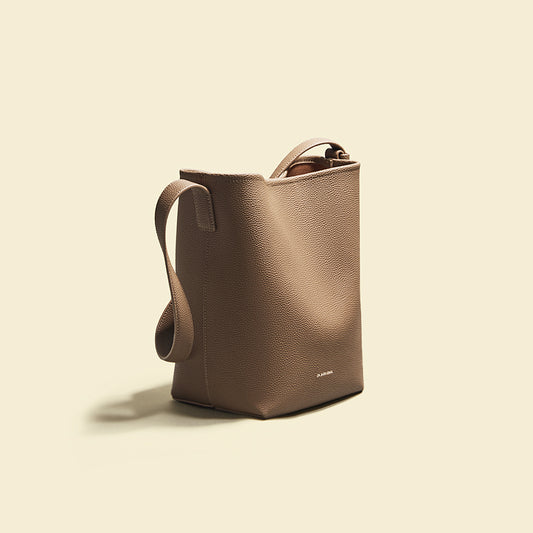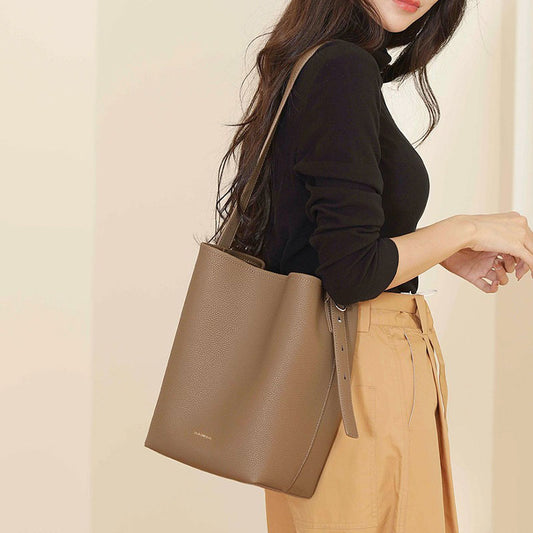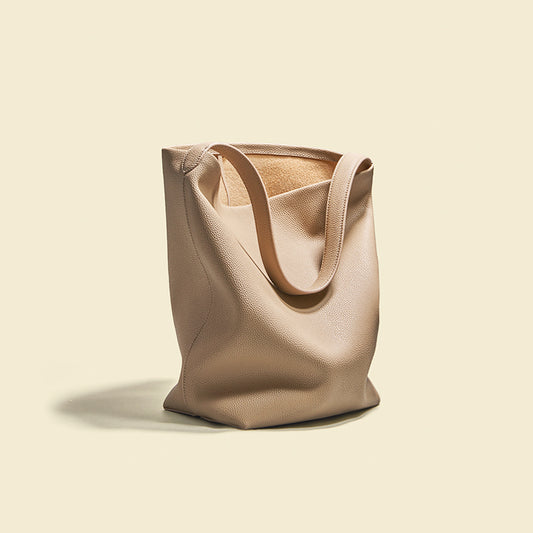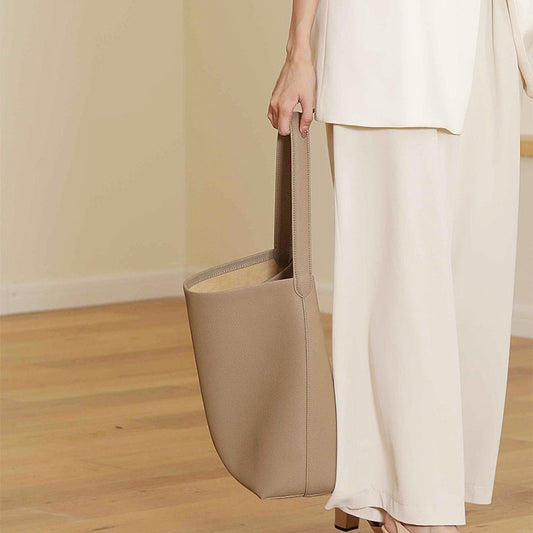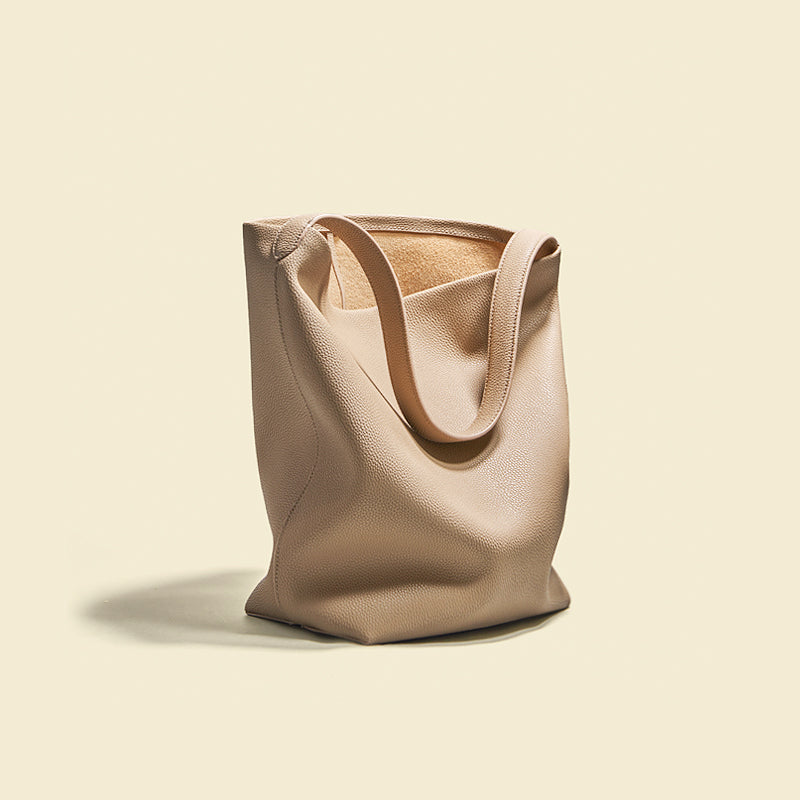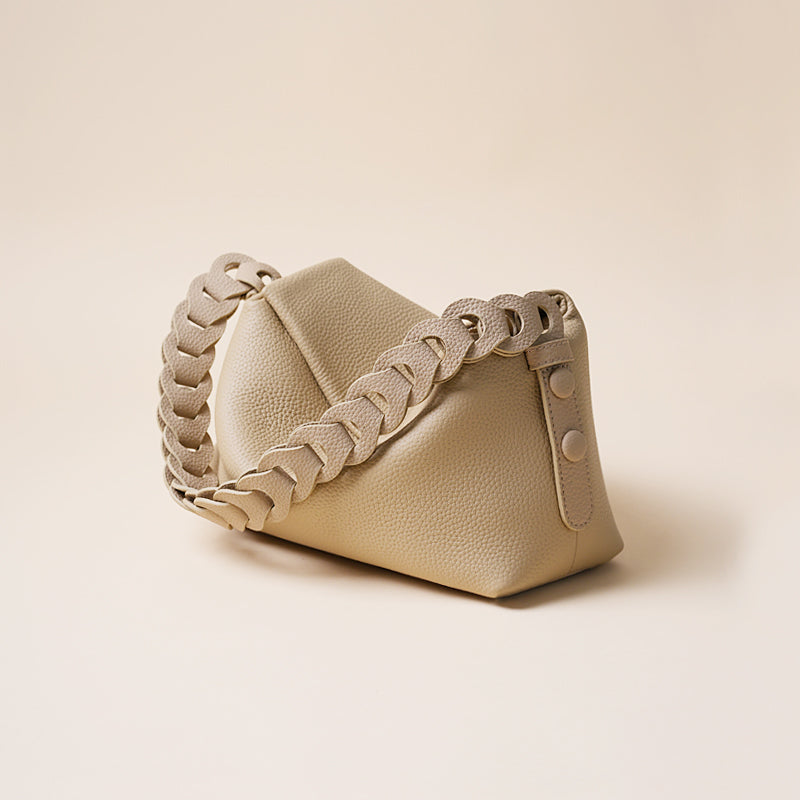Understanding Leather Types: Essential for Bag Enthusiasts
Leather bags are timeless, fashionable, and versatile, but understanding the pros and cons of different leather types is crucial before selecting. This article will guide you through a comprehensive journey, detailing 14 diverse leather types, including full-grain, aniline, and synthetic leather. This guide gives you insights into making an informed choice and finding the perfect leather bag that matches your taste and requirements.
Diverse Natural Leather Variants
When selecting the perfect leather for your beloved bags, understanding the nuances of each type is essential. Here, we delve into the diverse world of natural leather, encompassing various textures, finishes, and characteristics:
Full-Grain Leather:
Renowned for its durability and authentic appearance, it retains the natural surface, showcasing unique markings and developing a distinguished patina. Its strength and resilience make it a preferred choice for high-quality, long-lasting bags. Own a bag with full-grain leather? Unleash its full potential by checking out our guide on The Meaning, Maintenance, and Benefits of Full-grain Leather.

Top-grain Leather:
A little different from full-grain leather in terms of look, top-grain leather is also durable but has a smoother, more even surface. It's a balance between quality and aesthetics.

Nubuck Leather:
Gently buffed to create a soft, velvety surface, it exudes luxury but demands careful maintenance due to its susceptibility to stains and scratches. Its elegant texture is favored in sophisticated bag designs.

Suede Leather:
Derived from the underside of animal hides, suede leather boasts a plush, textured surface, appreciated for its softness and flexibility. However, it has to be handled carefully, and moisture damage is more likely to occur.

Split Grain Leather:
Extracted from the lower layers of the hide, split grain leather is cost-effective but sacrifices some durability and robustness compared to full-grain counterparts. It's often used in more budget-friendly bag options.
Bonded Leather:
Crafted from bonded leather scraps, this affordable option lacks the longevity of higher-quality leather but provides an economical choice for bag materials.

Aniline Leather:
Emphasizing natural aesthetics, aniline leather undergoes minimal processing, showcasing the hide's unique characteristics and imperfections. It ages beautifully, offering a more organic look over time.

Semi-Aniline Leather:
Combining the benefits of aniline and pigmented leather, semi-aniline offers a compromise between a natural appearance and added protection against wear and tear.

These natural leather types represent a spectrum of qualities, textures, and finishes, each catering to different preferences and needs in bag manufacturing.
Exploring Synthetic and Specialty Leathers
Beyond natural variants, the market offers a selection of synthetic and specialty leathers, each with distinct features and purposes:
Synthetic Leather:
Known for its versatility and affordability, synthetic leather replicates the appearance of genuine leather without using animal hides. It's durable, water-resistant, and easy to clean, commonly made from polyurethane (PU) or polyvinyl chloride (PVC). The ability to mimic various textures and finishes makes it popular for those seeking cruelty-free options or a wider range of colors and designs.
Saffiano Leather:
Distinguished by its cross-hatch textured surface, saffiano leather boasts exceptional durability and resistance to scratches and stains. Created by Prada, this type of leather has gained popularity in luxury bag designs due to its elegant appearance and robustness. Elevate your style game by checking out our deep dive into What Makes Saffiano Leather a Fashion Favorite.
Patent Leather:
Recognizable for its high-gloss finish, patent leather adds a plastic or lacquer coating. This method gives the leather a shiny, reflective surface. While visually striking, it requires careful maintenance to prevent cracking and maintain its sheen.
These synthetic and specialty leather options offer unique attributes that cater to various preferences and provide alternatives for consumers seeking specific features in their bags.
Comparing Natural and Synthetic Leather
Comparing natural and synthetic leather types can aid consumers in making informed decisions when selecting the ideal material for their bags:
The Appeal of Natural Leather: Authenticity, Aging, and Maintenance
Natural leather boasts a range of qualities derived directly from animal hides, each with distinct characteristics. On the other hand, synthetic leather, an artificial alternative, offers versatility and affordability. Understanding the nuances between these two options is crucial:
Natural Leather: Natural leather types, such as full-grain, top-grain, and aniline leather, carry an air of authenticity and durability. They often exhibit unique markings, patinas, and textures that evolve, contributing to their appeal. However, they may require specific care routines, which are more expensive.
Benefits of Synthetic Leather: Durability, Versatility, and Ease of Care
Synthetic leather presents an array of options that replicate the appearance of genuine leather at a more budget-friendly price point. It's versatile, durable, and often easier to clean. However, some synthetic materials may lack the natural aging process and unique characteristics found in natural leathers.
Considering the benefits and drawbacks of natural and synthetic leather is crucial in aligning the material choice with individual preferences and needs when selecting the right bag.
Guiding Factors: Budget, Maintenance, and Lifestyle Preferences in Bag Selection
So, when you're on the hunt for that perfect leather bag, a few things should sway your decision, and I'm here to help you with that:
Linking Quality with Price in Leather Bags
Pricing and Worth: Let's talk money! You know, different types of leather come with different price tags. Full-grain or exotic ones might be pricier due to their top-notch quality and unique vibes. On the flip side, you've got synthetic options that won't break the bank. Understanding the relationship between cost and quality can enable you to negotiate a lower price without sacrificing your goals.
Strategies for Natural and Synthetic Leather
Caring for Your Bag: Now, maintaining your stunning bag is crucial! Natural leathers need some TLC, like conditioning and protection from spills, to keep that charm intact. On the flip side, synthetic leathers? They're more of a "set-it-and-forget-it" kind – less fuss, less stress. So, if low maintenance is your jam, they might be your go-to.
Matching Leather to LifestyleWhat Suits You Best: Consider your lifestyle, friend. Are you after durability and that natural aging effect? Full-grain might be your cup of tea. On the other hand, if you're all about an affordable, easy-to-care-for option, synthetic leather might fit the bill just right!
Hope these pointers help you find the leather that matches your vibe and needs perfectly!
Conclusion
Ready to bag your ideal leather match? Whether it's the rugged charm of full-grain or the practicality of synthetic, you're now equipped to pick your perfect companion. Stay savvy with trends and make a choice that fits your style. Your leather adventure starts now!


